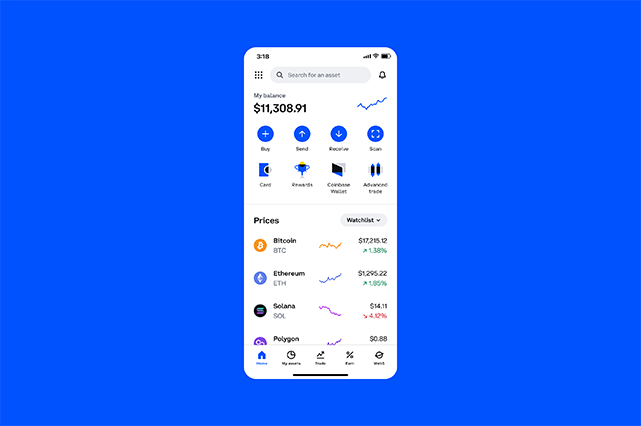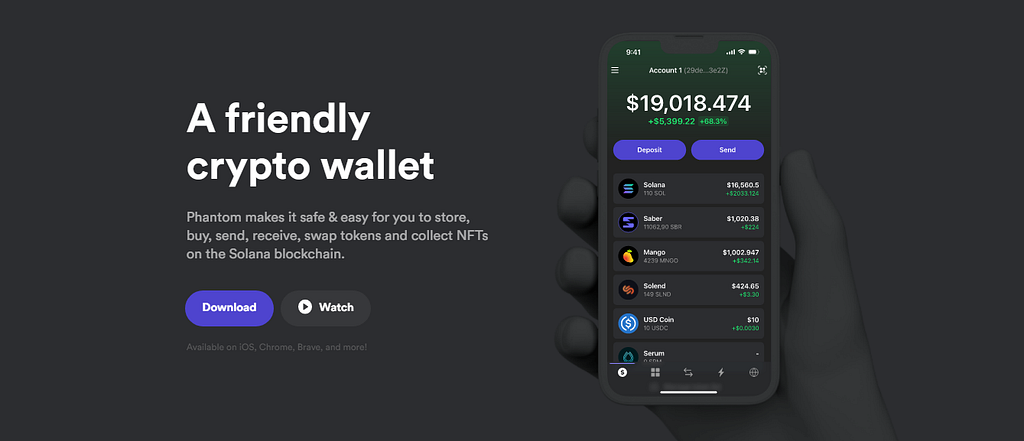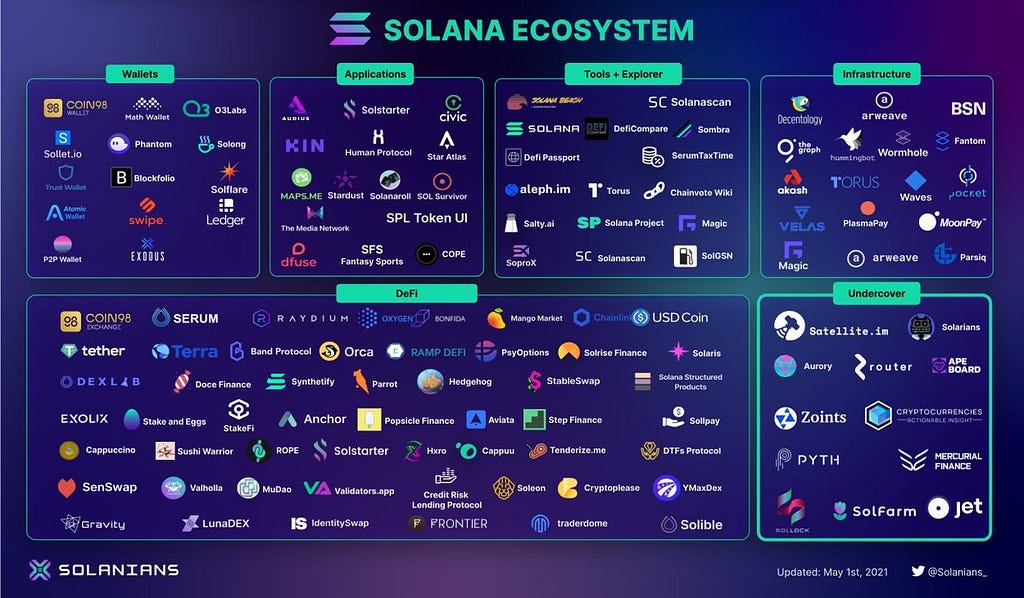Everything you need to know about the fastest and cheapest blockchain.
Solana, Solana, Solana. If you’ve been remotely interested in cryptocurrencies, you’ve probably heard this name buzzing around. It’s not just the talk of the town; Solana’s recent surge in price has made it one of the best-performing cryptos. Maybe you’re a crypto veteran keeping a close eye on the markets, or perhaps you’re a crypto virgin looking to step into the wild, wild west of the cryptocurrency world. Either way, I’ve got you covered.
Before we dive deep into the Solana ecosystem, let’s rewind to the start, go back to the basics, and briefly explore the history.
WTF even is crypto?
I’m pretty sure everyone has heard of Bitcoin ($BTC) by now unless you’re living under a rock, so let’s start there.
Bitcoin, the first-ever cryptocurrency, was invented in 2008 by Satoshi Nakamoto, an unknown person. It emerged in the aftermath of the 2007 financial crisis, also known as the Global Financial Crisis, the worst since the Great Depression. The crisis originated from predatory lending in the form of subprime mortgages targeting low-income homebuyers, excessive risk-taking by global financial institutions, and a continuous buildup of toxic assets within banks, which led to the bursting of the housing bubble, affecting economies far and wide.
Bitcoin was conceived as an alternative to our broken financial system, aiming to start a financial revolution and shift power to the people, away from corrupt financial institutions and banks that hyperinflate our currencies by printing money out of thin air, no longer backed by gold as it should be.
Bitcoin operates as a decentralized digital currency without reliance on a financial system or government authorities. It uses peer-to-peer transfers on a digital network powered by a blockchain, an open-source code that chains transaction histories to prevent manipulation. With its limited supply, a public ledger of every transaction, and the possibility to mine BTC, people saw the opportunity to have a truly decentralized financial system that cannot be tampered with.
However, every first iteration of new technology comes with its flaws. Due to its limitations, Bitcoin is seen more as a store of value and less as a medium of exchange or unit of account.
In steps Ethereum ($ETH)…
ETH was launched in 2014 as another decentralized blockchain that introduced the functionality of smart contracts. This innovation allowed transactions to be made “on-chain,” and data to be stored, enabling people to build decentralized applications (DApps), financial tools, and store art, all on Ethereum. This breakthrough led to the creation of strong developer and consumer communities around ETH, making it the second-largest crypto to date.
Similar to Bitcoin, Ethereum was a first-of-its-kind tech and was far from perfect. With high transaction fees that are slow compared to what we are used to, it just isn’t scalable. It can cost upwards of $100 to make a transaction, which makes no sense for 99% of the world.

Introducing Solana…
Solana, launched in March 2020, is a high-performance blockchain platform designed for decentralized applications (DApps) and cryptocurrencies. What sets Solana apart is its emphasis on scalability and speed. While many blockchains grapple with network congestion and slow transaction times, Solana aims to revolutionize the space with lightning-quick confirmation times and low transaction costs.
Solana distinguishes itself environmentally with its energy-efficient Proof-of-Stake (POS) mechanism, which we’ll discuss next. In contrast to Bitcoin’s 6,995,592,000 Joules per transaction, Solana uses only around 1873 Joules, underscoring its commitment to a greener blockchain.
Solana employs Proof of Stake (POS), a departure from the Proof of Work (POW) used by Bitcoin and, until recently, Ethereum. POS blockchains, more energy-efficient, do not limit block proposals based on energy usage. Validators stake tokens to activate their ability to create new blocks, eliminating the need for mining. Validators play a crucial role in processing transactions, maintaining network resistance to censorship, and ensuring top-notch performance. RPC nodes, running validator software, handle communication without voting, and stakers get rewarded for supporting the validation process by delegating their stake to validator nodes.
Here are some key metrics for Solana:
- Transactions settle in ~400 milliseconds
- Transactions cost as low as $0.000045
- Transactions consume less energy than two Google searches and 24 times less energy than charging your phone
- Capable of handling up to 4,000 transactions per second (TPS)
- 1,990 Validators, 2919 nodes, and 408,807 stakers
Now equipped with insights into Solana’s workings and scalability, it’s no wonder it earned the moniker “Ethereum Killer” during its launch, gaining traction swiftly. Thanks to its scalable nature, Solana secured partnerships with major brands like Visa, Shopify, Paypal, Google, and Helium Mobile, positioning itself as the preferred crypto for integrating into these platforms.
Backed by a resilient cult following, an active developer community, and currently holding the number 3 spot by market cap, Solana appears primed to be the next big thing. Now, let’s discuss how YOU can add Solana to your wallet and join the quickest, cheapest, and fastest-growing blockchain, participating in the financial revolution

Getting Started.
I know this can be confusing, and it might sound like I’m speaking a different language so let’s take it step by step.
First things first, you’ll need some Solana. To do this, we’ll head over to a centralized exchange (CEX), like Binance, Crypto.com, or in our case, we’ll be using Coinbase.
Think of a CEX as a bank where you can deposit fiat to buy crypto and, of course, withdraw your crypto for fiat.
To get started, either visit the Coinbase website or download the mobile app. Complete your Know Your Customer (KYC) process to register, and then input your bank details. Once that’s done, you’re ready to go. Easily navigate to the buy section, select Solana, input the amount you wish to purchase, and… boom, you are now a Solana holder.

Enter the Matrix.. erm, I mean web3.
Now that you have some Solana in Coinbase, you’ll want to download the Phantom wallet extension on your desktop or the app on your mobile.
Phantom is a decentralized Solana wallet, which means you can interact with native DApps built on Solana and hold digital collectibles/NFTs.
Coinbase is the “bank”. Phantom is your “wallet.”
If you plan to utilize your Solana and take part in the ecosystem, this will be a must. So go ahead and install your Phantom wallet.
Notes:
- You will be given a seed phrase, and a string of random words. Write this down. DO NOT store it online, and DO NOT share it with anyone. This is your unique code to access your account if you are ever logged out, which also means if given to anyone else, they can access your assets.
- Pick a password that is easy to remember but not easy to guess.
- Make sure you download from official app stores. There are lots of scams surrounding crypto apps.

Becoming a Soylana Manlet.
Congratulations! You are now one with the Solami, almost a full-on Soylana Manlet, in fact. We just need to show you around the block.
For the most part in crypto, you want to spend your time on X, Discord, and Telegram. These are the best apps for “keeping your ear to the streets.” I’d avoid the grifting gurus on TikTok and YouTube with their shorts; most of them just talk pish. Your best bet would be joining a digital collectible/NFT community or a Telegram group chat and getting to know people in the ecosystem, slowly immersing yourself in the space. In time, it will all make sense, and you will be a full-blown manlet like the rest of us.
I won’t go into detail about all the apps, as there are thousands now that could all have their own articles, so I’ll list some below with links to get started:
- NFT Marketplace: Magic Eden — Magic Eden Twitter
- Lending/Borrowing Platforms: MarginFi — MarginFi Twitter
- Explorer: SolScan — SolScan Twitter
- Staking: SolBlaze — SolBlaze Twitter
- Art: Exchange Art — Exchange Art Twitter
- Trading: BirdEye — BirdEye Twitter
- Gaming: Aurory — Aurory Twitter
- Casino & Sports Betting: Rollbit — Rollbit Twitter
From NFTs and Memecoins to Decentralized Finance (DeFi) and gambling, the Solana ecosystem pretty much has high-quality platforms that can appeal to people from all backgrounds.

Last thing. Stay safe.
One of the most important things to remember is to be safe and always stay cautious. Just like in traditional tech platforms, scams are everywhere.
DO NOT click on links that are not posted from official accounts. DO NOT trust anyone. DO NOT share your seed phrase EVER. There is no customer service or return of funds in decentralized finance. You are your own bank. You manage your funds. So only YOU are responsible.
You can get a Ledger, which offers another layer of security and requires you to manually accept transactions on the physical device, lowering the chances of getting drained unless you manually approve it. More on Ledger here.
Once again, stay paranoid. Stay woke. Stay safe.
Now, go off into the world of Solana and enjoy yourself; you’re a manlet now.

Introduction to Solana was originally published in The Dark Side on Medium, where people are continuing the conversation by highlighting and responding to this story.
